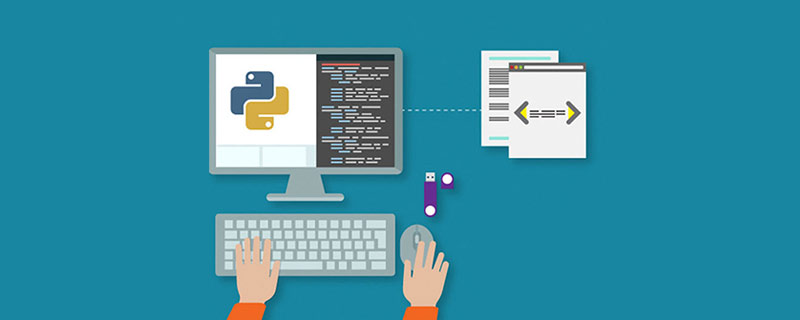Home >Backend Development >Python Tutorial >How to use lists in python
How to use lists in python
- coldplay.xixiOriginal
- 2020-10-30 14:35:1141873browse
How to use lists in Python: 1. To access the values in the list, use subscript index to access the values in the list; 2. Update the list and use the [append()] method to add list items; 3. To delete elements from a list, you can use the del statement to delete elements from the list.

How python uses lists:
Sequence is the most basic data structure in Python. Each element in the sequence is assigned a number - its position, or index, with the first index being 0, the second index being 1, and so on.
Python has 6 built-in types for sequences, but the most common are lists and tuples.
Operations that can be performed on sequences include indexing, slicing, adding, multiplying, and checking members.
In addition, Python has built-in methods for determining the length of a sequence and determining the largest and smallest elements.
List is the most commonly used Python data type, which can appear as a comma-separated value within square brackets.
The data items of the list do not need to be of the same type
To create a list, just separate the different data items with commas using square brackets Just enclose it. It looks like this:
list1 = ['physics', 'chemistry', 1997, 2000] list2 = [1, 2, 3, 4, 5 ] list3 = ["a", "b", "c", "d"]
Like string indexing, list indexing starts at 0. Lists can be intercepted, combined, etc.
Accessing values in the list
Use subscript index to access the value in the list. You can also use square brackets to intercept characters, as shown below:
Example (Python 2.0)
#!/usr/bin/python list1 = ['physics', 'chemistry', 1997, 2000] list2 = [1, 2, 3, 4, 5, 6, 7 ] print "list1[0]: ", list1[0] print "list2[1:5]: ", list2[1:5]
Output result of the above example:
list1[0]: physics list2[1:5]: [2, 3, 4, 5]
Update list
You can update the data of the list To modify or update an item, you can also use the append() method to add a list item, as shown below:
Example (Python 2.0)
#!/usr/bin/python # -*- coding: UTF-8 -*- list = [] ## 空列表 list.append('Google') ## 使用 append() 添加元素 list.append('Runoob') print list
Note: We will discuss this in the next chapter Discuss the use of the append() method
Output results of the above examples:
['Google', 'Runoob']
Delete list elements
You can use the del statement to delete elements of the list, The following example:
Example (Python 2.0)
#!/usr/bin/python list1 = ['physics', 'chemistry', 1997, 2000] print list1 del list1[2] print "After deleting value at index 2 : " print list1
The output result of the above example:
['physics', 'chemistry', 1997, 2000] After deleting value at index 2 : ['physics', 'chemistry', 2000]
Related free learning recommendations: python video tutorial
The above is the detailed content of How to use lists in python. For more information, please follow other related articles on the PHP Chinese website!

